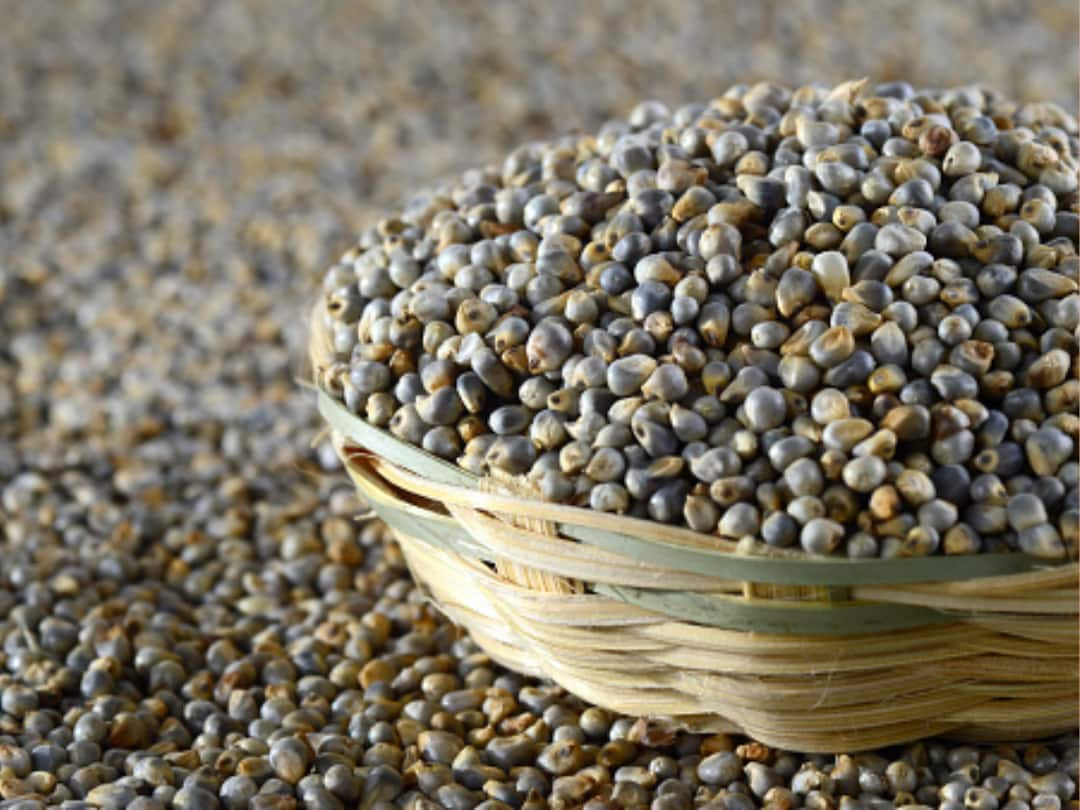Know The Health Benefits, Side- Effects And Ways To Consume Bajra
Eating complete grains like bajra on a regular basis may help avoid chronic illnesses including diabetes, heart disease, and certain malignancies.

New Delhi: Bajra, also known as pearl millet, is a type of grain that is commonly grown in arid regions and is a staple food in some parts of India, Africa, and the Middle East. It is highly nutritious and is a good source of carbohydrates, protein, fibre, and various vitamins and minerals. They come in white, yellow, grey, brown, and bluish-purple colours. The seeds are usually boiled as cereal grains or finely powdered and used as flour.
Health Benefits Of Bajra:
In general, cooked millet is a healthy source of protein, carbohydrates, and fibre. It's also gluten-free, making it a good option for individuals with celiac disease or those on a gluten-free diet. Bajra, like certain other grains, has been linked to considerable health advantages simply because it is a whole-grain food. Eating complete grains like bajra on a regular basis may help avoid chronic illnesses including diabetes, heart disease, and certain malignancies.
Listed below are a few of the health benefits of Bajra:
1. Promotes Digestion:
Bajra is a good source of dietary fibre, which works as a pre-biotic in our gut, and helps to promote digestion and prevent constipation. Insoluble fibre also aids in the prevention of overeating by increasing the bulk of meals, resulting in early satiety.
2. It is Gluten-free:
It is a gluten-free grain, making it a good option for people with celiac disease or gluten intolerance.
3. Rich in vitamins and minerals:
Bajra is high in essential vitamins and minerals, such as iron, magnesium, phosphorus, and potassium, which are essential for overall health and well-being.
4. Supports weight management:
Bajra is a complex carbohydrate that is slowly absorbed from our digestive tract, resulting in more satiety while guaranteeing a continual flow of energy. This helps to prevent overeating and bingeing between meals.
5. Low glycemic index:
Bajra has a low glycemic index, which means it can help regulate blood sugar levels and prevent spikes in insulin levels. It is beneficial to diabetics also due to its high fibre content and the ability to slowly digest starch, which takes longer to convert to glucose. This aids in the management of diabetes and provides diabetics with prolonged energy release. Furthermore, bajra is high in magnesium, which has been linked to a lower incidence of diabetes.
6. Promotes heart health:
Bajra is rich in magnesium, which helps to regulate heart function and can reduce the risk of heart disease. Magnesium can help avoid cardiovascular diseases risk factors like high blood pressure and diabetes. Studies have also shown that magnesium has a favourable effect on decreasing LDL (bad) cholesterol and protecting against stroke.
Probable Side- Effects Of Bajra:
Like any food, consuming too much bajra can lead to some side effects, including:
1. Digestive issues: Eating large amounts of bajra can cause digestive issues such as bloating, gas, and constipation.
2. Allergic reactions: Some people may be allergic to bajra, which can cause symptoms such as itching, rashes, and difficulty breathing.
3. Thyroid Issues: Millets are known to decrease iodine absorption, which is necessary for thyroid function. When ingested in excessive amounts, this can lead to goitre.
Overall, bajra is a nutritious food that can provide many health benefits when consumed in moderation. If you experience any adverse effects after eating bajra, it is important to speak to your doctor.
Ways To Consume Bajra:
Bajra is a versatile grain that can be consumed in various ways, including:
- Boiled: Boil bajra in water until soft and use it as a base for salads, stews, or curries.
- Ground into flour: Bajra flour can be used to make roti, a traditional Indian flatbread. It can also be used to make porridge or added to baked goods for added nutrition.
- Roasted: Roast bajra in a dry pan until it pops, then enjoy it as a snack or sprinkle it on top of salads.
- As a pudding: Cook bajra in milk with sugar and spices to make a delicious and nutritious pudding.
- In soups: Add bajra to soups and stews to increase their nutritional content and add texture.
Related Video
Union Budget 2024: Nirmala Sitharaman Reaches Parliament Ahead Of Budget Presentation Today | ABP News
Top Headlines





































